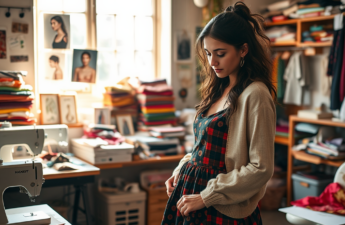A fashion merchandiser exists at the nexus of business and style, having a pivotal role in the retail and fashion industries. This role is about more than just having an eye for fashion; it’s about combining analytical skills with a deep understanding of style trends to make strategic decisions that drive sales and profitability. Fashion merchandisers are the strategic minds behind which products end up on store shelves, how they are presented, and even the timing of their release. They work closely with designers, buyers, and store managers to ensure that the right merchandise is available to the right customers at the right time.
Roles and Responsibilities of a Fashion Merchandiser
The duties of a fashion merchandiser are extensive and dynamic. They must keep their finger on the pulse of the fashion world, understand customer behavior, and be adept in managing financial aspects. Here are the core responsibilities expected from a professional in this field:
- Market Research: Conducting research to stay informed about market trends and consumer preferences.
- Inventory Management: Overseeing inventory levels, ensuring that products are stocked and replenished in acknowledgment of demand.
- Product Development: Collaborating with designers to develop products that align with the brand and meet market demand.
- Marketing Strategies: Crafting marketing initiatives and promotions to heighten the appeal of products to the target demographics.
- Sales Analysis: Analyzing sales data to understand what is selling and what is not, to inform future purchases and strategies.
Understanding the Fashion Cycle
A crucial aspect of a fashion merchandiser’s job is to understand the fashion cycle. This involves keeping up with the various stages a fashion trend goes through, from emergence to obsolescence. It includes:
- Introduction of new styles and designs into the market,
- Peak, where a trend is at its most popular,
- Decline, as the market becomes saturated and interest wanes, and
- Rejection or obsolescence, when a style is no longer in demand.
Fashion merchandisers must assess where each product fits within this cycle to make educated decisions regarding product introductions, markdowns, and discontinuations.

Skills and Qualifications Required
A blend of creative and analytical skills is mandatory for fashion merchandisers. Strong business acumen is just as essential as a comprehensive understanding of fashion. The qualifications typically include:
- An undergraduate degree in fashion merchandising, business, or a related field,
- Experience in retail, sales, or fashion,
- Proficiency in retail management software,
- Expertise in forecasting and budgeting,
- Creative thinking coupled with strategic planning abilities, and
- Ability to work collaboratively with other departments.
Challenges Faced by Fashion Merchandisers
The path of a fashion merchandiser is replete with challenges. Staying ahead of consumer trends, managing inventory effectively, and responding to market shifts are just a few issues they face daily. Keeping pace with technological advancements is also crucial, as new tools and platforms can revolutionize how merchandise is marketed and sold. Fashion merchandisers must also be adept at navigating the impact of global events, such as economic downturns or pandemics, that can dramatically affect consumer habits.
Impact of Sustainability on Fashion Merchandising
As the topic of sustainability becomes increasingly prevalent, fashion merchandisers are now tasked with incorporating eco-friendly practices into their strategies. This necessitates working with sustainable materials, advocating for ethical production methods, and promoting circular fashion to minimize waste. Fashion merchandisers must strike a balance between environmental responsibility and the commercial goals of their brand, often leading the charge for change within the industry.
Conclusion
In sum, fashion merchandising is a complex discipline requiring a unique skill set that combines creativity with business expertise. Successful fashion merchandisers must be trend-spotters, savvy marketers, adept financial planners, and vigilant inventory controllers, all while adapting to a constantly evolving industry. As they skillfully navigate through market research, product development, and the implementation of marketing strategies, they also drive the sustainable future of fashion. The role of a fashion merchandiser is crucial in the lifecycle of fashion trends and the economic health of fashion retailers worldwide.
FAQs
1. What educational background is necessary to become a fashion merchandiser? An undergraduate degree in fashion merchandising, business, or a related field is typically required, along with relevant experience in fashion or retail.
2. Are fashion merchandisers involved in the design process? Yes, they often work closely with designers to develop products that are marketable and meet consumer demands.
3. How do fashion merchandisers stay informed about industry trends? They conduct continuous market research, attend fashion shows, review industry reports, and monitor consumer behavior and social media.
4. What role does a fashion merchandiser play in sustainability? Fashion merchandisers are increasingly responsible for ensuring that sustainable practices are integrated into product development and marketing strategies.
5. Can a fashion merchandiser work independently? While some aspects of the role can be independent, fashion merchandisers typically work in teams with designers, buyers, and other stakeholders in a retail or brand environment.



